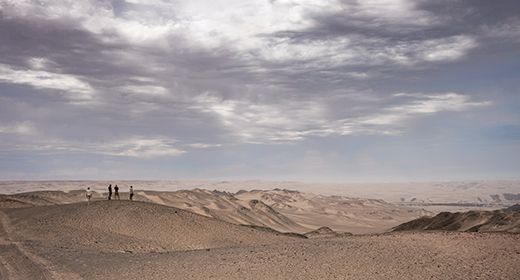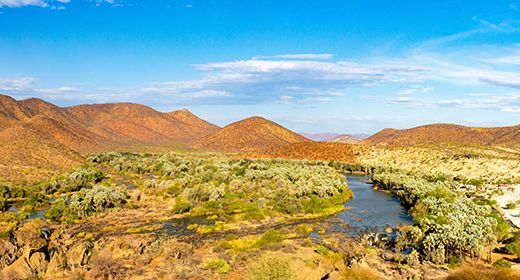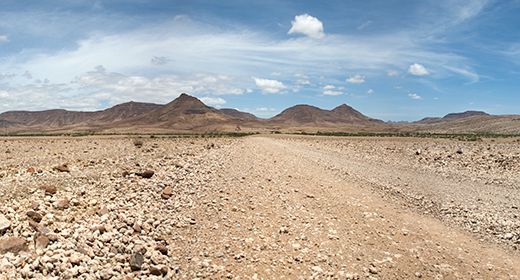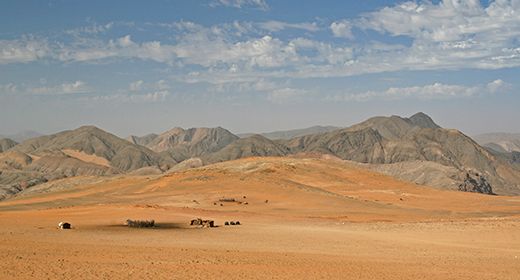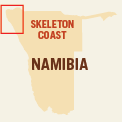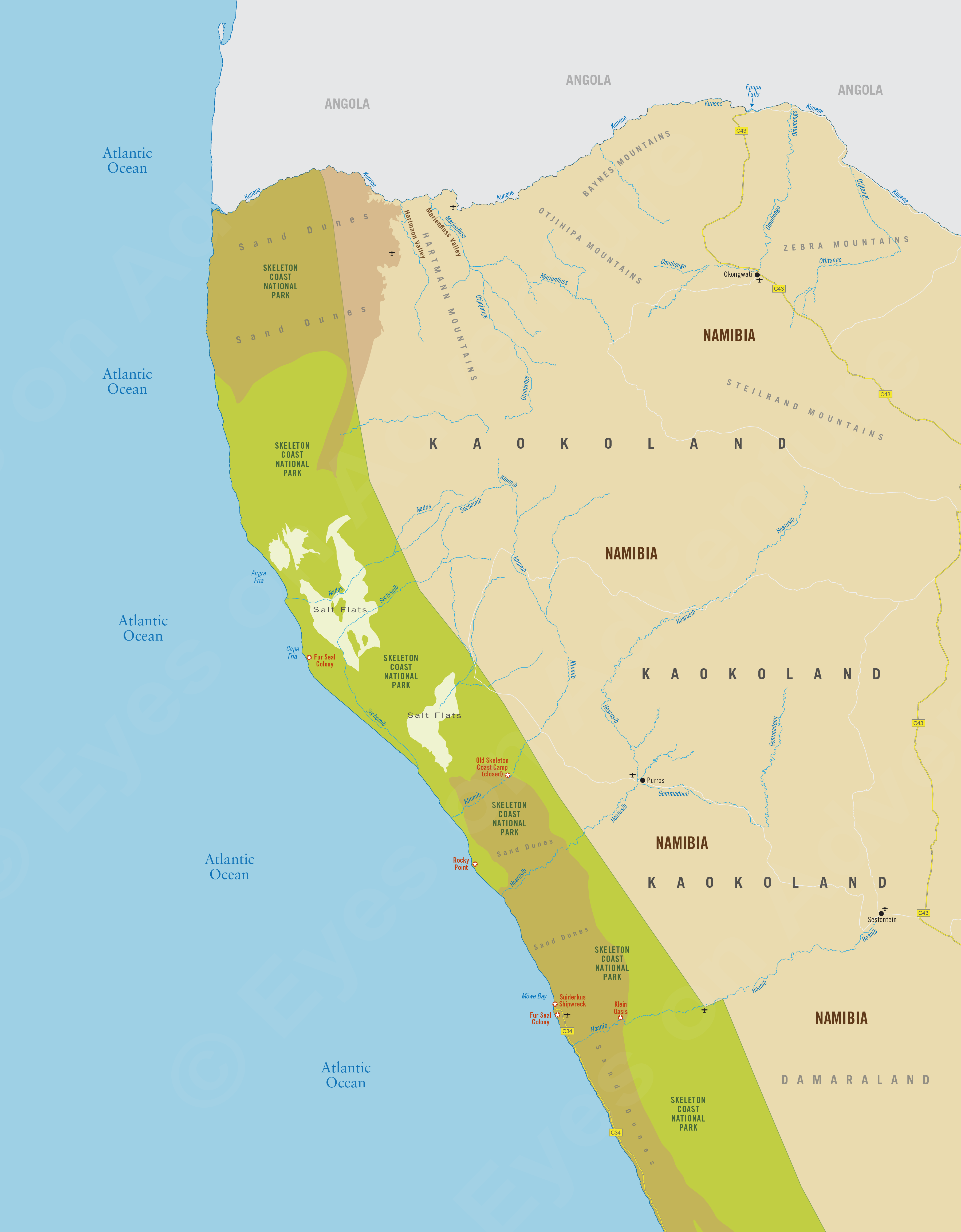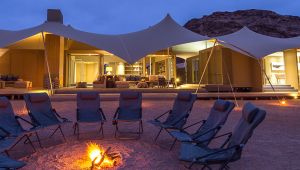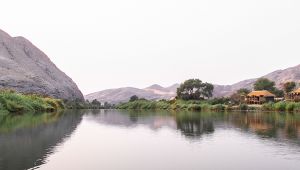Skeleton Coast, Kaokoland & Kunene
(incl. Kunene River, Skeleton Coast National Park)
Region Links: Caprivi / Zambezi, Damaraland & Waterberg, Etosha, Namib Desert & Sossusvlei, Skeleton Coast, Kaokoland & Kunene, Swakopmund, Windhoek
Highlights
- Visit the Skelton Coast, one of the last great wildernesses on Earth
- See the endangered desert-adapted elephants that manage to survive in this harsh land
- Explore towering sand dunes, desert mountains, and endless miles of Atlantic Ocean beach
- Experience the Himba culture and witness how they have maintained their age-old way of life
- Stay on the Kunene River, Namibia's northern boundary with Angola
EOA Recommends: Hoanib Skeleton Coast Camp, Serra Cafema Camp, Shipwreck Lodge
The Skeleton Coast is named for the numerous shipwrecks that have occurred along this wild, desolate and dune-covered stretch of Namibia's far north coastline. Inland lies Kaokoland, a vast, arid, and mountainous place of stark beauty.
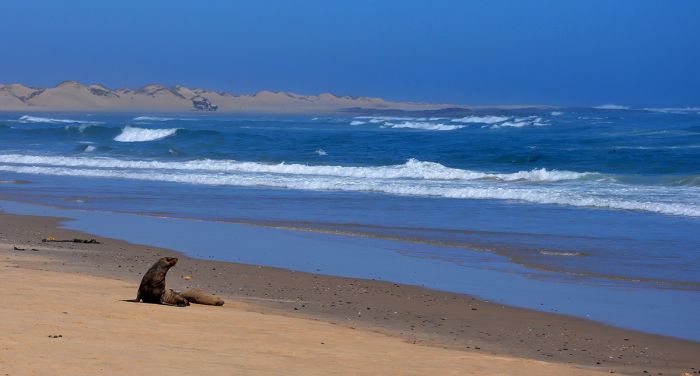
A cape fur seal along the Skeleton Coast in northern Namibia.
Wildlife is understandably sparse and less diverse in the harsh conditions of the region, but some species are well adapted to the unforgiving, arid conditions. Depending on the location visited, animals you have a chance to see include elephants, lions, cheetah, oryx, black rhino, brown hyena, springbok, giraffe, zebra, black-backed jackal, and more. There are several known colonies of cape fur seals found along the coast.
The Kunene River marks the boundary between Namibia and Angola and the rich Hartmann's Valley supports some of the only rich grassland in the region.
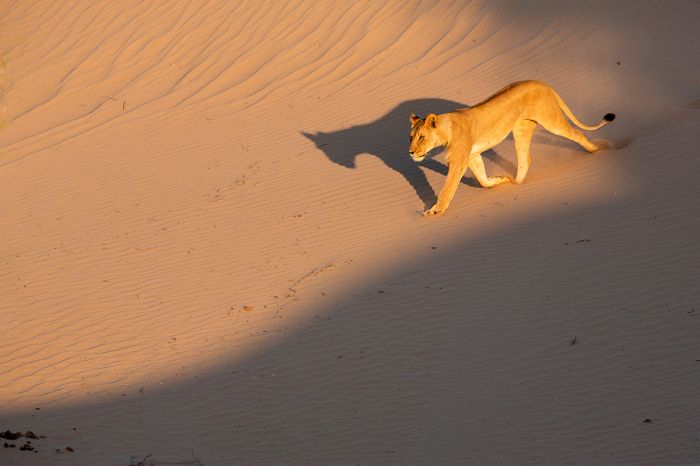
A lioness running down a dune in the Skeleton Coast National Park.
Often described as other-worldly, this region is seldom visited by tourists due to its remote location and the extreme nature of the region, but for those who want to truly get off the beaten path, this is a place that should not be missed.
Besides the wild and varied landscape and ocean, the region offers an opportunity to interact with the indigenous Himba people that somehow manage to exist here. The Himba are a semi-nomadic, pastoralist tribe that live in small transient communities with their cattle. They are known for covering their skin and hair with a distinctive ochre-colored paste.
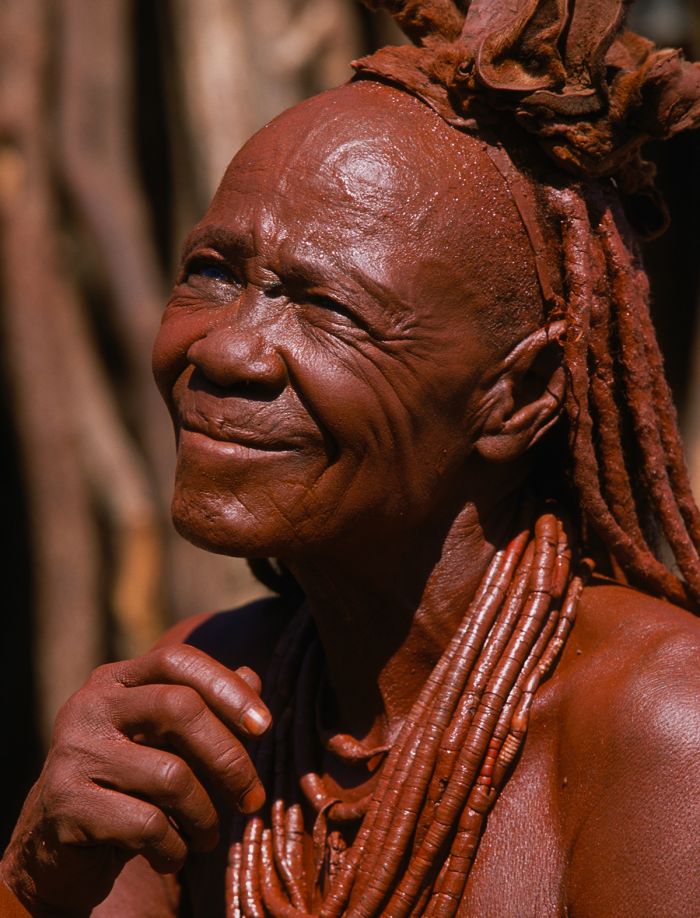
A Himba woman in Kaokoland, Namibia (Copyright © James Weis).
There are only a few safari camps located in this vast region and, although driving here is possible, we recommend flying, as the distances between camps are great. Those fortunate enough to visit the Skeleton Coast and Kaokoland will leave feeling as if they experienced something unique on Earth.
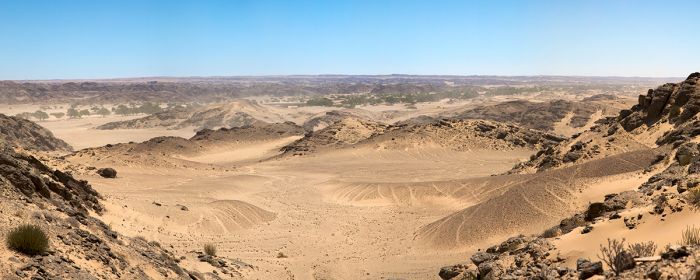
Endless desert in Kaokoland, Namibia with river and green trees visible.
Read More...
Himba People, History, Kaokoland, Kunene River, Skeleton Coast, Wildlife
History
The northern portion of the Skeleton Coast was first protected in 1907 as part of an enormous reserve which also stretched from the Angola border, south and inland all the way to, and including Etosha. Although sparsely populated and little visited, hunting around Etosha prompted the country to protect this vast area used as the migratory grounds for the animals and thus included areas far north of Etosha.
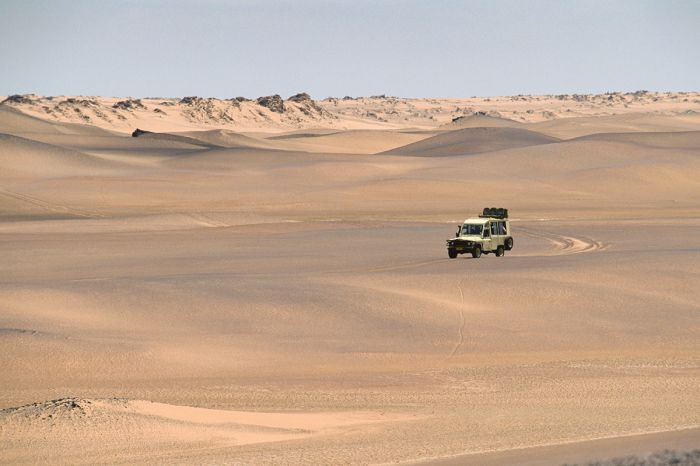
Exploring the Skeleton Coast region in northern Namibia (Copyright © James Weis).
After the First World War and via a League of Nations mandate, Namibia (then called South West Africa), was administered by South Africa. During the 1950s, South Africa granted mining and fishing rights along the Skeleton coast to private companies. A new harbor was planned at Cape Frio, with investors obtained and research completed during the 1960s. At the 11th hour, South Africa decided to pull the plug on the project in order to protect the very profitable Walvis Bay.
In 1967, the original reserve was reduced in size, Etosha was made a national park, and Kaokoland, Damaraland, and the Skeleton Coast were downgraded to 'homeland' status. In order to protect the fragile environment along the northern coast of Namibia, the Skeleton Coast was granted national park status in 1971.
Note: Namibia gained independence from South Africa in 1990.
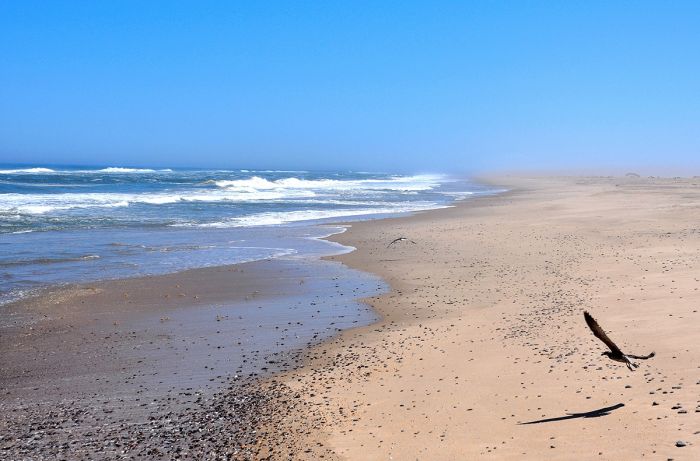
Beach view along the Atlantic Ocean in northern Namibia.
The northern section of the park was declared a wilderness area and was to be left essentially untouched and pristine. A single company, Skeleton Coast Fly-in Safaris, was granted permission to operate tours in this area. Stringent rules were mandated to minimize the impact of tourists, including a ban on any permanent structures, all trash removed, very limited numbers of tourists permitted per year, and only fly-in safaris allowed (no driving). Only a few sand tracks were allowed and off-road driving was forbidden.
Today there are still only a handful of operators with camps in the region and the entire region, including the Kunene River, Skeleton Coast, and interior Kaokoland remains one of the least visited destinations in southern Africa.
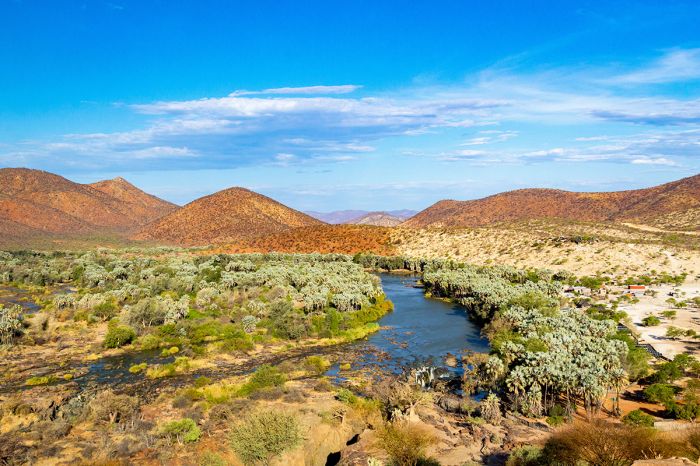
The Epupa Falls on the Kunene River; Namibia's northern border.
Kaokoland
Kaokoland (part of the Kunene Region) is Namibia's least populated area and one of sub-Saharan Africa's last true wildernesses. It spans the area directly inland from the Skeleton Coast and north of Damaraland. It is defined by its wild and rugged landscape of desert mountains, scrubland, and the indigenous Himba people, which have maintained their ancestral way of life.
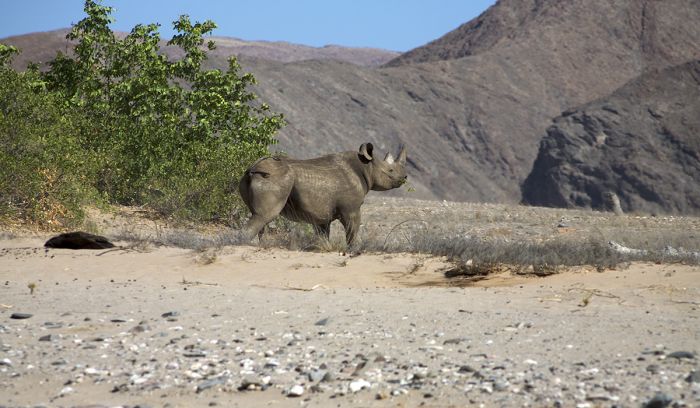
A black rhino in Kaokoland, Namibia.
In spite of the inhospitable environment, some species of animals have learned to survive and even thrive here, albeit in small numbers. The critically endangered desert-adapted elephant lives in this arid place in small herds that trek long distances in search of water and food. Kaokoland is also home to black rhinos, which are well adapted to desert life.
Only a single paved road runs north-south thru the territory plus a few sandy tracks that were constructed by the South African Defense Force long ago. Because of the harsh conditions prevalent here, there are very few people and only a handful of lodges and camps. Visiting independently in a vehicle is not recommended. Overland guided tours are possible using 4x4 vehicles.
We recommend a fly-in safari to visit to one or more of the organized camps in the region.
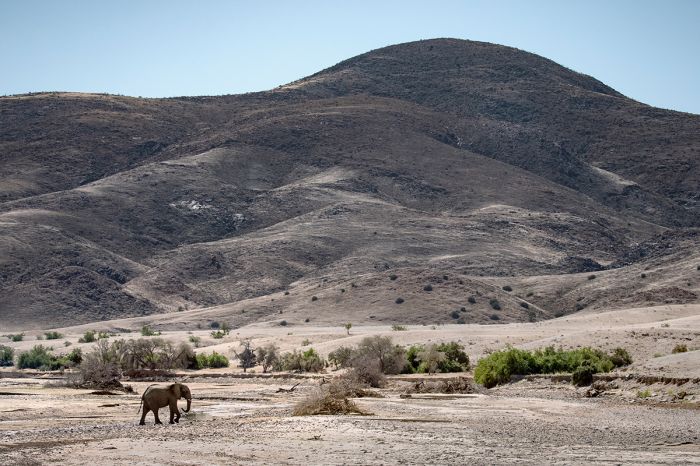
A desert-adapted elephant crosses the Hoarusib River bed in Kaokoland.
Skeleton Coast
The historically treacherous, but wildly beautiful shoreline covering the northern third of Namibia's Atlantic Ocean border is known as the Skeleton Coast. It begins in the south at the Ugab river and continues for 315 miles (510 kms) all the way to the Angola border.
Dubbed the "Coast of Death" by early Portuguese explorers in the 1600s, its name is testament to the numerous shipwrecks, lost human lives, and the whale and seal bones that once littered the shore in the times of the whaling industry. Hundreds of ships have wrecked along this coast over the years.
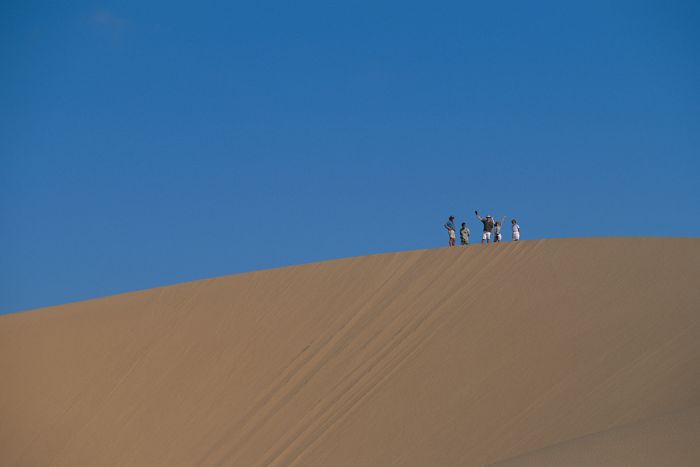
Visitors to the Skeleton Coast atop a towering dune (Copyright © James Weis).
Few tourists are fortunate enough to have visited this relatively unknown and mostly inaccessible destination. Driving in is possible, but most visitors fly in to one of the private airstrips for a 3-5 day stay at one of the safari camps.
The Skeleton Coast was granted national park status in 1971 (read more above) and it has strict regulations on what safari operators are permitted in terms of activities and numbers of guests. It remains one of the most pristine wildernesses in the world and our experiences there are memorable and unlike anything we have ever seen.
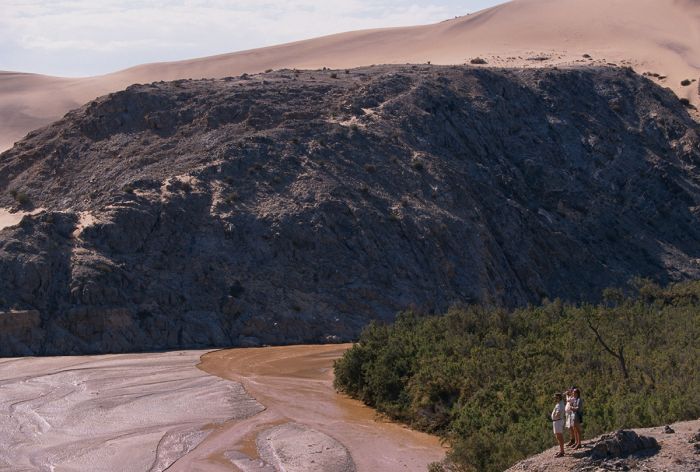
Exploring the incredible landscape in the Skeleton Coast National Park (Copyright © James Weis).
The landscape in the Skeleton Coast is known for its towering barchan dunes, which are huge crescent-shaped ridges of sand that have been shown to move across the land at up to 10 feet per year. In other places, there are expansive gravel plains, salt flats, barren hills, and rocky outcrops. There is a constant heavy surf along the Atlantic Ocean beaches.
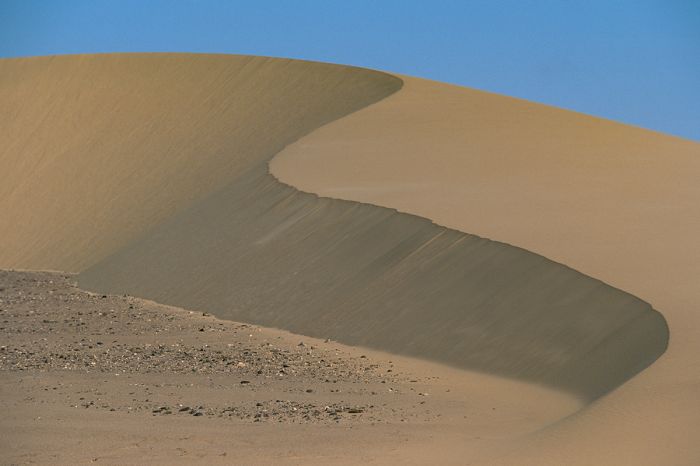
A beautiful barchan dune in the Skeleton Coast (Copyright © James Weis).
The ocean water here is frigid, brought north from the Antarctic via the Benguela current. This cold water means rain clouds do not develop along the coast and this contributes to the parched climate prevalent in this region. Rainfall rarely exceeds 10 mm (0.4 in) per year.
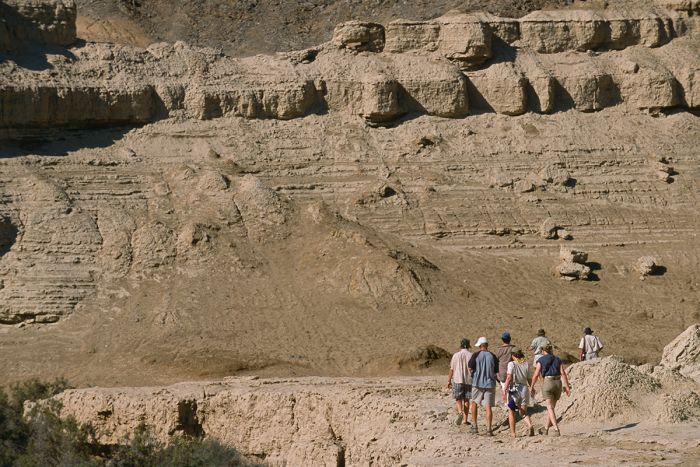
Exploring the Clay Castles area in the Skeleton Coast (Copyright © James Weis).
The cold Atlantic water collides with the hot desert air and gives rise to dense coastal fog on most mornings. The result is morning dew, which accounts for some of the moisture used by the plants and animals that manage to survive here.
There are several rivers flowing west to the ocean, but they only flow on rare occasions and remain dry beds most of the time. Water is available to the remarkable desert-adapted elephants, which dig into the dry riverbeds to create deep drinking pools and provide sustenance for the other animals.
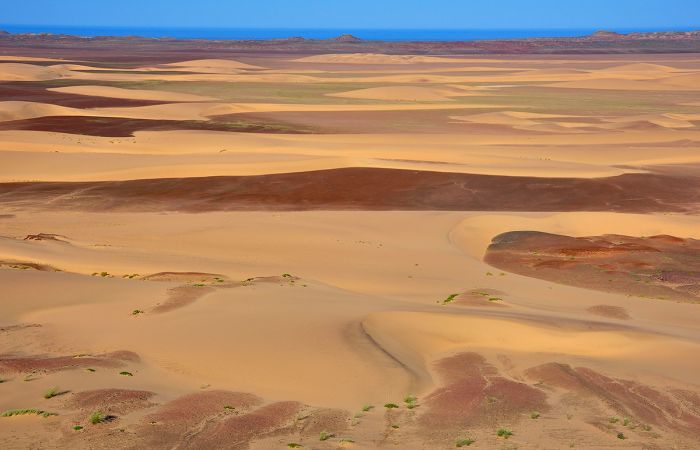
View over a dune field towards the Atlantic Ocean in the Skeleton Coast.
Kunene River
The Kunene River forms the boundary between Namibia and Angola. Two notable safari camps are situated on the river, with activities based on the river and into Hartmann's Valley and along the Marienfluss river.
Hartmann's and Marienfluss are both spectacularly beautiful valleys, with grasslands frequented by springbok, oryx, bat-eared fox, and ostrich. Marienfluss is the richer of the two valleys, especially after a rare rainfall. To the west of Hartmann's valley are towering dunes that mark the start of the Skeleton Coast. Interesting 'fairy circles' are found in Marienfluss and, to a lesser extent, at Hartmann's.
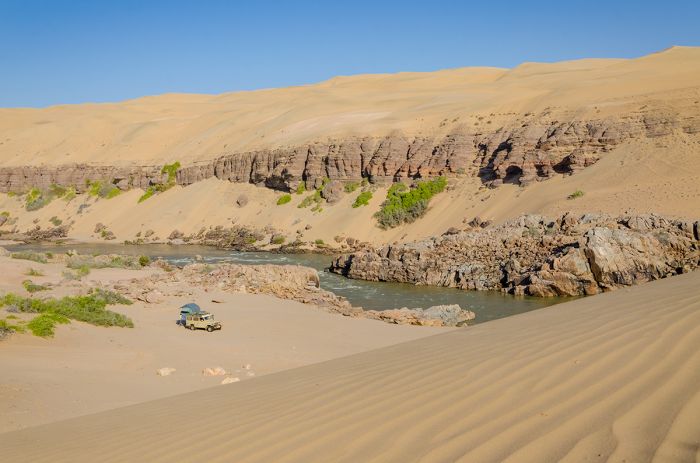
View along the Kunene River on the border with Angola.
Wildlife
Only the hardiest and desert-adapted species can live in this harsh land. Still, animals do live here and are encountered on drives from the safari camps, but don't come with the expectation of seeing lots of big game.
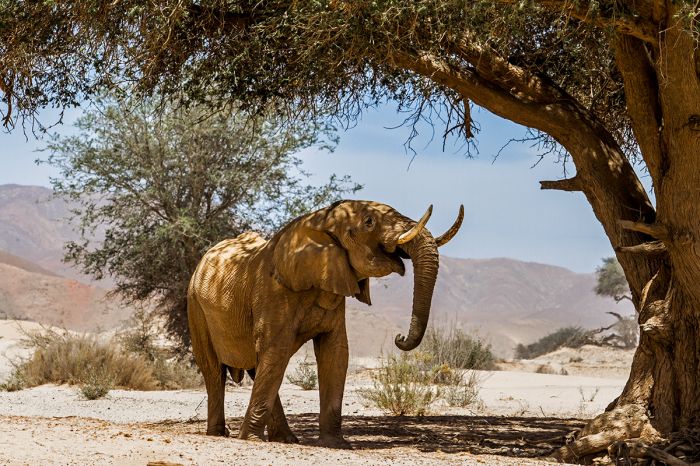
A bull elephant under an ancient leadwood tree in the dry Khumib riverbed.
Almost unbelievably, desert-adapted elephants have evolved to live in small herds here, but traveling long distances for food and digging for water in the mostly dry riverbeds. Desert-adapted lions are found in very small number... they survive in this place of dryness by getting water from their prey, licking dew, and even eating the tsamma melon.
Other species that are commonly seen include black rhino, Hartmann's mountain zebra, giraffe, oryx, springbok, brown hyena, black-backed jackal, and baboon. If you are extremely lucky, you may see a cheetah.
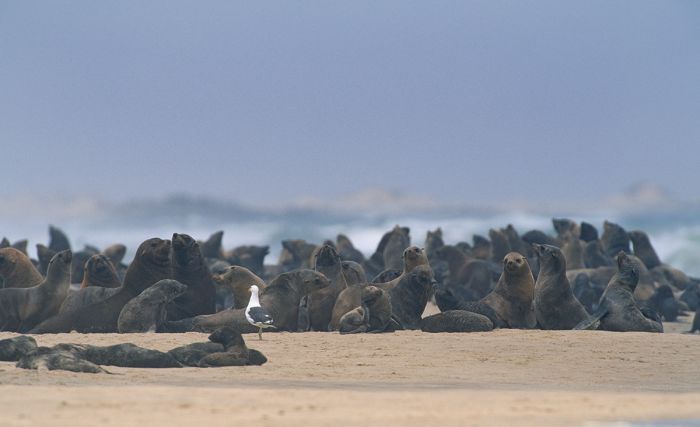
The cape fur seal colony at Cape Frio.
There is a cape fur seal coloniy at Cape Frio in the Skeleton Coast. The colony has around 20 000 seals and visits may also provide a glimpse of black-backed jackals or a brown hyena, which sometimes prey on the seals.
Himba people
The native people of Kaokoland are the Himba, which are estimated to number around 50 000, but live in small groups and villages spread out over this vast region. They also live across the Kunene river in Angola.
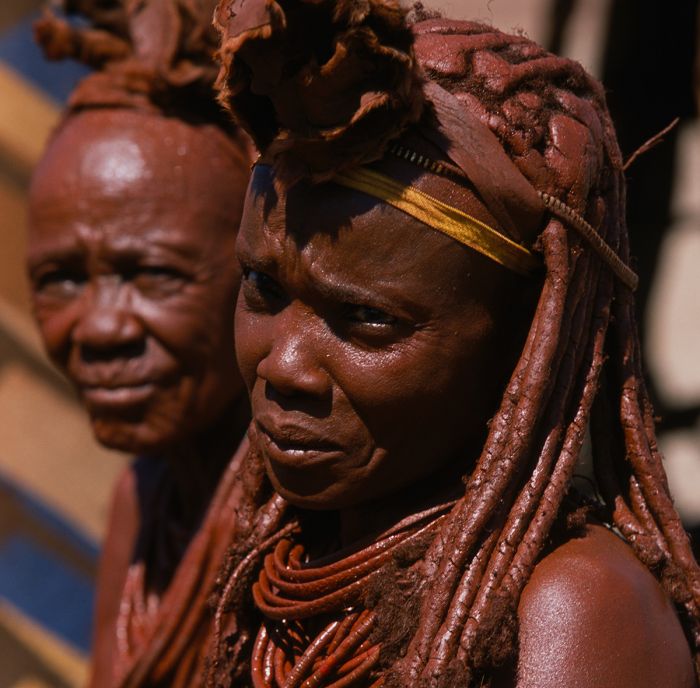
Women of the Himba tribe in Kaokoland (Copyright © James Weis).
The Himba are known for their distinctive appearance due to the men and women coating their skin and hair with a paste. The ochre-colored mixture, called otjize, is a mixture of butterfat, clay and sand and serves to protect the skin from the sun and insects, as well as to cleanse as there is precious little water here for washing.
The Himba are semi-nomadic and keep cattle, sheep and goats, which they utilize for milk and meat. Because the climate in Kaokoland is so harsh, the area has never been settled by Europeans and the Himba have thus managed to maintain their ancestral culture. Visits to a Himba settlement are offered as an activity at some of the safari camps.
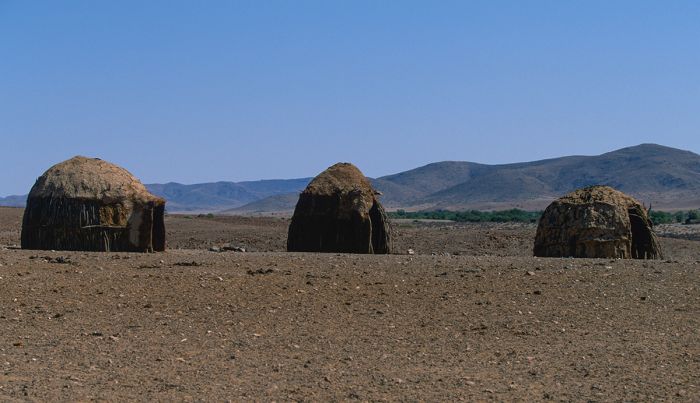
Himba dwellings (Copyright © James Weis).
Read More...
Himba People, History, Kaokoland, Kunene River, Skeleton Coast, Wildlife
Great Good Fair Poor
- Jan
- Feb
- Mar
- Apr
- May
- Jun
- Jul
- Aug
- Sep
- Oct
- Nov
- Dec
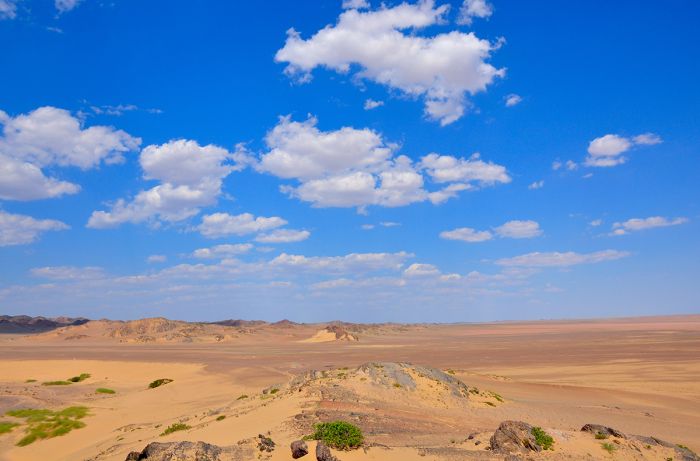
Sand dunes along the Skeleton Coast.
The Skeleton Coast and Kaokoland are year-round destinations. The region experiences the same weather year-round: moderate to hot temps, wind, and virtually no rain. The Skeleton Coast is characterized by frequent fog in the early morning, a dry desert climate, and cold sea breezes that sometimes temper the hot air. It is almost always sunny and warm.
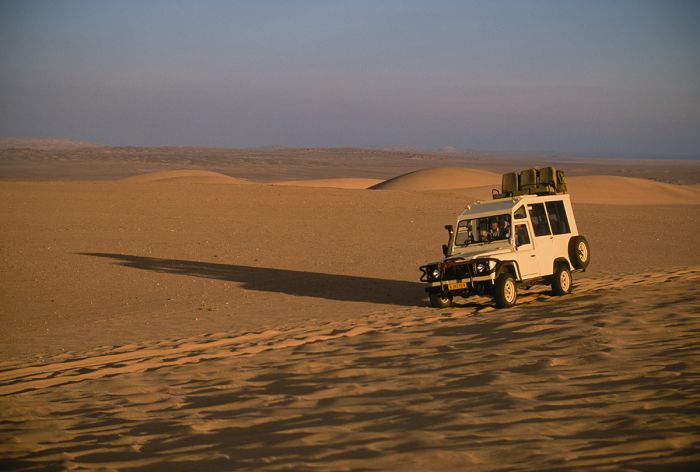
Exploring the landscapes in the Skeleton Coast (Copyright © James Weis).
WINTER
May thru October is the coolest part of the year and rainfall is nonexistent. Heavy morning fogs along the coast are common. Mornings are chilly averaging 54-57°F (12-14°C), but days warm at around 70-73°F (21-23°C).
SUMMER
November thru April is summer and the only chance for rain, but rainfall is very uncommon. Morning temps average 59-62°F (15-17°C), usually accompanied by fog along the coast. Daytime temps average 78-84°F (25-29°F).
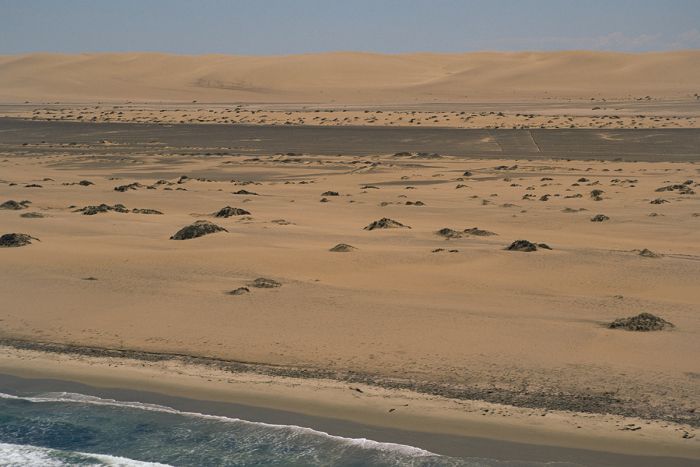
Aerial image along the Skeleton Coast (Copyright © James Weis).
Showing 1–2 of 2 results
A stylish camp in one of Africa's most remote safari destinations. Explore the sand dunes, mountains, and Atlantic Ocean coastline for dramatic vistas and desert-adapted wildlife.…




